CAA News Today
Meet the 2022 CAA Annual Conference Support Grant Recipients
posted by CAA — Feb 03, 2022
CAA offers Annual Conference support grants to graduate students in art history and to international artists and scholars. Meet this year’s recipients of our named support grants and find information about their presentations at the conference and their corresponding session below. Dozens of other support grants were given to CAA members through the Presidents Council of CAA and the “Pay it Forward” initiative.
CAA TRAVEL GRANT IN MEMORY OF ARCHIBALD CASON EDWARDS, SENIOR, AND SARAH STANLEY GORDON EDWARDS
The CAA Support Grant in Memory of Archibald Cason Edwards, Senior, and Sarah Stanley Gordon Edwards was made possible by Mary D. Edwards. The grant supports women who are emerging scholars at either an advanced stage of pursuing a doctoral degree or who have received their PhD within the two years prior to the submission of the application.
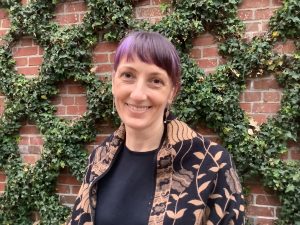
Kristan Hanson, Dumbarton Oaks
Presentation at the Annual Conference: “Nurturing Growth: Eva Gonzalès’s La Plante favorite and Berthe Morisot’s Fillette aux jacinthes”
Session: Enchanted by Nature: Picturing Gendered Plants and Female Agency in Europe and China (17th – 19th Century)
Kristan M. Hanson is an art historian and plant humanist. Her research examines the historical significance of individual plants and botanical forms in art to deepen understandings of human/plant interactions and anthropogenic environmental change. She currently holds a consultancy as Managing Digital Editor for the Plant Humanities Initiative at Dumbarton Oaks, prior to which she was a 2020–2021 academic year fellow. Hanson has also received fellowships and awards to support her research from the Oak Spring Garden Foundation, HASTAC Scholars program, Hall Center for the Humanities, and Institute for Digital Research in the Humanities.
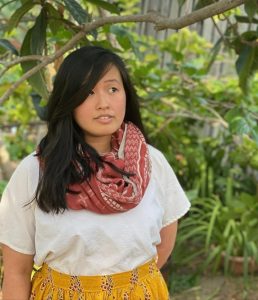
Cynthia Kok, Yale University
Presentation at the Annual Conference: “’Een bloempoth van parlemoer’: Painting Life in Dirck van Rijswijck’s Mother-of-Pearl Floral Panels”
Session: Analogous Matter: Skeuomorphism as Method
Cynthia Kok is a Ph.D. candidate at Yale University. Her dissertation focuses on sensorial engagement in making and craft experiments with mother-of-pearl in the early modern Dutch world. Cynthia received her MA from Bard Graduate Center and her BA from the University of California, Berkeley. She has held curatorial internships at the Metropolitan Museum of Art’s Costume Institute, the Frick Collection, and the Smithsonian American Art Museum and she is the 2021-2023 Kress History of Art Institutional Fellow at the Leiden University Centre for the Arts in Society (LUCAS).
Honorable Mention:
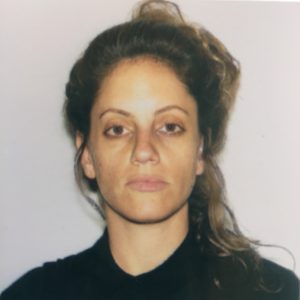
Shoghig Halajian, University of California San Diego
Presentation at the Annual Conference: “Destroying the Form: On the Spatial Politics of Rafa Esparza’s bust: A Mediation on Freedom”
Session: Monumentality in Art: Memory, History, and Impermanence in Diaspora
Shoghig Halajian is a curator and art historian, who serves on the Board of Directors at Human Resources LA and was previously Assistant Director at LACE (Los Angeles Contemporary Exhibitions). She is co-editor of the online journal Georgia, in collaboration with Anthony Carfello and Suzy Halajian, which is supported by a Creative Capital | Andy Warhol Foundation Arts Writers Grant. She has presented projects at the Hammer Museum and the ONE Archives at USC Libraries in Los Angeles; Le Magasin–National Center for Contemporary Art in Grenoble; Al Ma’mal Foundation for Art in Jerusalem, UKS in Oslo, among others. She was a 2021 Research Fellow at Ocean Space–TBA 21 in Venice. She is a Ph.D. candidate in Art History, Theory and Criticism with a Critical Gender Studies emphasis at University of California, San Diego, where her research explores contemporary queer aesthetics and performance through a critical race lens, focusing on artistic experiments with collaboration.
SAMUEL H. KRESS FOUNDATION CAA CONFERENCE SUPPORT FELLOWSHIP FOR INTERNATIONAL SCHOLARS
Recognizing the value of the international exchange of ideas and experience among art historians, the Kress Foundation is offering support for international scholars participating as speakers at the 2022 CAA Annual Conference. The scholarly focus of the papers must be European art before 1830.
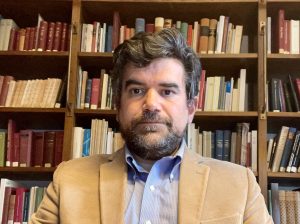
Lorenzo Vigotti, Kunsthistorisches Institut in Florenz
Presentation at the Annual Conference: “Diplomatic Exchanges and Architectural Inventions along the Silk Road: The Case of Soltaniyeh and Santa Maria del Fiore”
Session: Beyond the Silk Road
Lorenzo is a trained architect with a M. Arch. from the University of Florence, Italy, and a Ph.D. in architectural history from Columbia University with a dissertation on the origin of the Renaissance palace. He is currently a post-doc at the Kunsthistorisches Institut in Florence, where he studies the shift in spatial organization in domestic residences between the 14th and the 15th century, with an emphasis on early collecting practices and the birth of the studiolo as a manifestation of power by the urban oligarchy. Together with Shahid Beheshti University in Tehran, Iran, Lorenzo is exploring the circulation of architectural knowledge between medieval Persia and Italy, specifically the materiality and the problems of preservation of brick dome structures. Finally, he oversees the virtual reconstruction of the now lost Florentine ghetto at the Medici Archive Project.
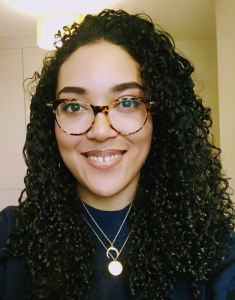
Ana Cristina Howie, University of Cambridge
Presentation at the Annual Conference: “’Favoured Black Attendants’ in ‘Splendid State Portraits’? Genoese merchants, Flemish painters, and the Spanish Atlantic Slave Trade”
Session: Archive, Object, Image: Reading Against the Grain in the Dutch and Spanish “Golden Ages”
Ana is originally from New Zealand and completed her bachelor’s degree in the History of Art and French at the University of Auckland. She continued her studies at the Université Paris-Sorbonne, then earned her MA in the History of Art at the Courtauld Institute in London, specializing in early modern Netherlandish artistic production. She began her PhD under the supervision of Professor Ulinka Rublack at the University of Cambridge in 2019, funded by the Prince of Wales International Scholarship. Her doctoral research investigates the relationships between women, dress, and portraiture in seventeenth-century Genoa, with a focus on the oeuvres of Flemish painters Peter Paul Rubens and Antony van Dyck. She is the recipient of the inaugural Society for Renaissance Studies/British School in Rome Residential Doctoral Research Scholarship for 2021/22. Her work and projects have been supported by the Royal Historical Society, Centre for Research in the Arts, Social Sciences and Humanities, Magdalene College, Cambridge, and the Cambridge Trust.
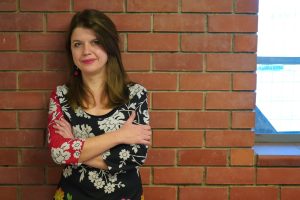
Iro Katsaridou, Museum of Byzantine Culture, Thessaloniki, Greece
Presentation at the Annual Conference: “Through Foreign Eyes: Curating the 1821 Greek War of Independence”
Session: Instrumentalizing Memory and the Politics of Commemoration
Iro Katsaridou was recently (2021) appointed Director of the Thessaloniki Museum of Photography, Greece. Previously, she has worked as curator of modern and contemporary art at the Museum of Byzantine Culture in Thessaloniki. She studied art history at the Aristotle University of Thessaloniki and the Université Paris I-Sorbonne, and also pursued museum studies at the City University of New York. Her doctoral dissertation (Aristotle University, 2010) focused on contemporary Greek photography. Iro has researched photography and art in wartime (World War I and II), curated exhibitions and edited related catalogues in this particular field. More recently (2021) she has curated an exhibition at the Museum of Byzantine Culture on the aspects of Philhellenic movements in art and the Greek War of Independence. She has taught as adjunct faculty at several Greek universities. She has co-edited two books on photography during the Nazi Occupation of Greece (1941-1944), one on the art of World War I in Greece, and written articles and book chapters on photography, museum policies, as well as the relationship between contemporary Greek art and politics. She has presented her research in international conferences, while in 2019 and 2020 she participated in the CAA-Getty International Program.
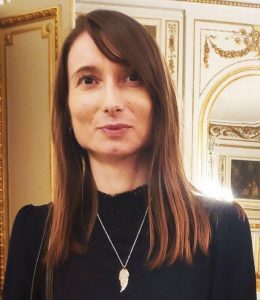
Jana Kantoříková, Sorbonne University/CNRS
Presentation at the Annual Conference: “Crucified Women: The Way of the Cross in the Symbolist Movement”
Session: Women in Art in the second part of the 19th century-early part of the 20th
Jana Kantoříková is an associated researcher at the Center of Interdisciplinary Research on Central, Eastern and Balkanic Europe at Sorbonne University/CNRS. She received her PhD in Slavic Philology, History of Czech Literature and Literary Theory at the Charles University in Prague and the University of Regensburg (2018). She taught at the University of Passau (Germany) and the Sorbonne University. Her research focuses on European modernisms and cultural transfers between France, Germany and the Czech lands, for example “Horror Fragmenti in Czech Symbolism” in Angst, Anxiety, Anguish in Fin de Siècle Art and Literature (Cambridge Scholars Publishing, 2020) or “Le Cycle de la volupté et de la mort : ‘livre empoisonné’ et ornementation du péché” in L’art (décoratif) du livre fin-de-siècle: éloge du parergon (Éditions Otrante, 2021). She is currently working on projects related to the reception of Friedrich Nietzsche in Central Europe and the blackness imagery in the Czech lands in the 19th century.
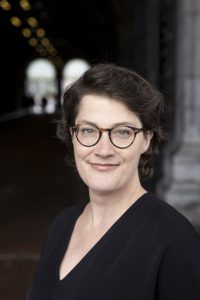
Judith Noorman, University of Amsterdam
Presentation: “The Invisibility Myth. Women, Art and Household Consumption in the Dutch Republic”
Session at the Annual Conference: Archive, Object, Image: Reading Against the Grain in the Dutch and Spanish “Golden Ages”
Judith Noorman is Assistant Professor of Art History in the Early Modern Period and Director of the Amsterdam Centre for Studies in Early Modernity (both at the University of Amsterdam). As of September 2021, she is leading a governmentally funded NWO VIDI project: The Female Impact. Women, Art and Household Consumption in the Dutch Republic, 1580-1720. She earned her PhD at the Institute of Fine Arts, New York University and has conducted postdoctoral research at the Drawing Institute, Morgan Library & Museum. At the 110th CAA Annual Conference, she is presenting a paper on The Invisibility Myth. Women, Art and Household Consumption in the Dutch Republic, as part of the HNA-sponsored session Archive, Object, Image: Reading Against the Grain in the Dutch and Spanish “Golden Ages”, which is chaired by Carrie J. Anderson and Marsely Kehoe.
CAA-GETTY INTERNATIONAL PROGRAM
Every year since 2012, the CAA-Getty International Program has enabled art historians, museum curators, and artists who teach art history to attend CAA’s Annual Conference. This program is funded on an annual basis by the Getty Foundation. Meet the CAA-Getty International Program participants here.
CAA 2022 Awards for Distinction
posted by CAA — Jan 24, 2022
CAA announces the 2022 recipients of Awards for Distinction. By honoring outstanding member achievements, CAA reaffirms its mission to encourage the highest standards of scholarship, practice, connoisseurship, and teaching in the arts. With these annual awards, CAA seeks to honor individual artists, art historians, authors, museum professionals, and critics whose accomplishments transcend their individual disciplines and contribute to the profession as a whole and to the world at large.
Among the awards, the Distinguished Artist Award for Lifetime Achievement is presented to Betye Saar who has not only forged a singular practice for six decades but has also influenced generations of artists, makers, and thinkers. Calling upon the legacies of artists like Joseph Cornell, her symbolic and potent assemblages, of which she’s best known, reflect on the lives, experiences, and identities of African Americans, spirituality, and cultural connectivity.
The Distinguished Lifetime Achievement Award for Writing on Art is presented to Wu Hung. Perpetually interested in the shape of time, in relation to the time of the world, he has authored many books, essays, and exhibition catalogues that bring Chinese visual culture into different orders of focus, taking into account the changing conditions of tombs, screens, performances, and protests. The scope of his work has an epic quality, allowing arguments to unfold across centuries without losing sight of the very human presence of artists and audiences.
Art Journal Award
Alfred H. Barr Jr. Award
Alfred H. Barr Jr. Award for Smaller Museums, Libraries, Collections, and Exhibitions
Frank Jewett Mather Award
Charles Rufus Morey Book Award
Elina Gertsman, The Absent Image: Lacunae in Medieval Books, Penn State University Press, 2021.
Arthur Kingsley Porter Prize
Artist Award for a Distinguished Body of Work
Kent Monkman
CAA/AIC Award for Distinction in Scholarship and Conservation
Zahira Véliz
Distinguished Artist Award for Lifetime Achievement
Betye Saar
Distinguished Lifetime Achievement Award for Writing on Art
Wu Hung
Distinguished Feminist Award – Artist
In lieu of the Distinguished Feminist awards, we will recognize leaders in the field of feminist art and art history in our 2022 programming highlighting the 50th Year Anniversary of feminism at CAA.
Distinguished Feminist Award – Scholar
In lieu of the Distinguished Feminist awards, we will recognize leaders in the field of feminist art and art history in our 2022 programming highlighting the 50th Year Anniversary of feminism at CAA.
Distinguished Teaching of Art Award
Fred Hagstrom
Distinguished Teaching of Art History Award
Terry Smith
Excellence in Diversity Award
Citations:
Art Journal Award
In organizing a course of study predicated on the ontological challenge to discourses of art offered by trans and nonbinary positions, David J. Getsy and Che Gossett have generously identified a major lacuna in the field and provided a toolkit for its amelioration. The jury unanimously selected their “A Syllabus on Transgender and Nonbinary Methods for Art and Art History” as the most distinguished contribution to the Art Journal in 2021. The syllabus not only identifies, positions, and summarizes critical scholarship in the field of transgender and nonbinary studies, it also demonstrates the fruitful integration of pedagogy and emerging research methodologies. Noting the relative dearth of art historical scholarship that has taken up trans methods and histories, the authors suggest the ways in which key themes and terms from art might be critically reevaluated in light of transgender studies. An introduction to each section’s bibliography synthesizes complex debates and individual arguments with remarkable clarity. Sensitive to the necessary intersections of trans analytics with critical approaches to race, ability, and class, the authors highlight readings from Black feminist thought and abolition optics, among other transversal concerns, that elucidate points of fracture within and strategies of resistance to the regulatory gender binary. At once rigorous and accessible, Getsy and Gossett’s contribution offers an adaptable blueprint for researchers and educators.
Committee:
Omar Kholeif, Sharjah Art Foundation
Tilo Riefenstein, School of the Arts, York St John University
Phil Taylor, George Eastman Museum (Chair)
Alfred H. Barr Jr. Award
America is haunted. Genocidal policies unleashed on Native Americans; the horror of the transatlantic slave trade; war, racism, and social injustice; dark passages in community and individual histories – these traumas and more have left behind a trail of spirits. Taking as its topic the paranormal in American art, Supernatural America reveals the myriad ways in which citizens and artists have sought to see, understand, or come to terms with the ghosts of the past. Lavishly illustrated, with many images never seen before, Supernatural America breaks new ground in presenting the paranormal as a historical subject of wide-ranging importance. Incisive essays by scholars and artists cover painting and sculpture from the late 18th century to the present, spirit photography, art channeled through mediums, spiritualist paraphernalia, folk and outsider art, UFO-inspired materials, video and installation from a range of perspectives. This revealing, thought-provoking investigation into an emerging scholarly field gives proof to William Faulkner’s well-known line: ‘The past is never dead. It’s not even past’.
Committee:
Susan Aberth, Bard College
Benjamin Anderson, Cornell
Karen Lang, University of Arizona
Andrew Saluti, Syracuse University (Chair)
Joyce Tsai, Clyfford Still Museum
Alfred H. Barr Jr. Award for Smaller Museums, Libraries, Collections, and Exhibitions
In 2015 the Ryerson Image Centre acquired the archives of Berenice Abbott, including more than 6000 photographs and 7000 negatives, her papers, correspondences, and manuscripts. One of the key figures in the history of documentary photography, Abbott is now known as an archivist as well as an artist. It was Abbott who preserved Eugene Atget’s archives at the end of the twenties and published his work. Her own photographs, taken while working for the WPA, consolidated her reputation as a documentary photographer. What exactly is that reputation? In order to answer that question, Documentary in Dispute meticulously reconstructs the manuscript of the book Changing New York, first published in 1939 by Dutton & Co, with photographs by Berenice Abbott and text by renowned art critic Elizabeth McCausland. In a tour de force of archival research and scholarly presentation, Sarah M. Miller reveals how the project was altered to obscure the aesthetic, political and ethical values of photographer and author. Miller’s beautifully written, highly focused essay on Abbott and McCausland situates them in an international avant-garde which recognized the potential of image and text to transform, even to break, our habits of seeing and being. Miller’s overall approach recalls Walter Benjamin’s own in the 1930s. Not coincidentally, Benjamin was inspired by Abbott’s archival and photographic achievements.
Committee:
Susan Aberth, Bard College
Benjamin Anderson, Cornell
Karen Lang, University of Arizona
Andrew Saluti, Syracuse University (Chair)
Joyce Tsai, Clyfford Still Museum
Frank Jewett Mather Award
The jury has unanimously selected Kaira M. Cabañas’ Immanent Vitalities: Meaning and Materiality in Modern and Contemporary Art. Cabañas has written a highly readable volume addressing the material relations between objects and subjects as well as addressing the limiting institutional conventions of academic art history. Her work draws upon theories of new materialism, an animating force that, when attended to, requires rethinking binary categories such as living and inert or life and matter. Cabañas’ volume traverses histories and hemispheres: from the perceptual doubts engendered by the force of color in Alejandro Otero’s paintings to the enmeshed material contingencies of Gego’s metal sculptures, from the sensorial therapeutic propositions of Lygia Clark’s relational objects to the curatorial entanglements of Alessandro Balteo-Yazbeck’s challenges to the grid, and from the affective agencies Mario Pedrosa located in the paintings of Djanira da Motta e Silva to the documented rituals of care obfuscating boundaries between the organic and the inorganic in Matheus Rocha Pitta’s Polaroids. Cabañas proposes an alternative to the kind of nation-bounded analyses that often burden studies of modern and contemporary art of Latin America. She addresses academic art history’s tendency to isolate along geographic lines, marginalizing practices and scholarship. Cabañas’ text thus models a critical strategy for assessing not just artworks but the field itself.
Committee:
Julia Bryan-Wilson, University of California, Berkeley
Kim Theriault, Dominican University
Andrew Wasserman, Dominican University (Chair)
Charles Rufus Morey Book Award
Elina Gertsman, The Absent Image: Lacunae in Medieval Books, Penn State University Press, 2021.
Countering the customary interpretation of late medieval art as relentlessly profuse and exuberant, Elina Gertsman’s The Absent Image: Lacunae in Medieval Books, explores different constructions of emptiness ranging from the presentation of voids in illustrations to represent the unrepresentable to the deliberate inclusion of physical holes in manuscript pages designed to reveal portions of other pages. Gertsman’s investigation of the “fecundity of emptiness” is a generative and compelling topic for scholars of art history/visual studies across areas, both within and outside Medieval Studies. She argues and demonstrates that, between 1200s and 1500s, the broad circulation of scientific thought and its engagement with theology and formal and literary discourses on emptiness, absence, and negation account for visual, cognitive, and material expressions on the pages of medieval books. Cross-disciplinary in its approach, Gertsman’s book simultaneously draws attention to the visual and material aspects of the manuscripts, phenomenological experience, and philosophical, religious, and scientific theories of the period. In doing so she uncovers an unexpected kinship between the medieval artists and the modernist avant-garde, where the void is regarded as the locus of the sublime and of boundless possibility. Her erudite writing and compelling approach to the subject poses questions throughout that magnify the relevance of her study and stimulate personal inquiry—as a reader reflects on other areas of consideration across time called out in the text. The book is lavishly illustrated and artfully designed with a shape and size complementary to the subject of study.
Committee:
John Cunnally, Iowa State University
Christina Hellmich, Fine Arts Museums of San Francisco
Laura Anne Kalba, University of Minnesota
Lisa D. Schrenk, University of Arizona
Dorothy Wong, University of Virginia (Chair)
Arthur Kingsley Porter Prize
Marius Hauknes offers a riveting and multi-layered interpretation of the role of spectatorship in the production of meaning in the 13th-century crypt of the Anagni Cathedral. Rather than consider a viewer as a passive onlooker, he devotes attention to multiple aspects of embodied spectatorship: movement, (shifting) angles/perspectives, (in)visibility, temporality, and knowledge. These offer a powerful vantage point from which to consider the intersection of the painting program with the body itself. Drawing attention to contemporary concerns and interests in the body’s health, its cognitive capacities (and limits), and its place in the universe, Hauknes places the paintings into conversation with medicine and astrology. The images emerge as intellectual acts in a religious and political setting that grappled with problems of temporality and being. Hauknes evinces deep and extensive scholarly research, and is able to draw precise and appropriate insights from contemporary cultural and historical contexts, without losing focus on the artwork itself. While offering compelling readings of specific scenes — showing how they could connect, overlap, or echo with one another — Hauknes posits that comprehensive spectatorship was not possible. Instead, human comprehension and temporality contrasts with the divine, creating a space for reflection on the need for medicine and astrology.
Committee:
Nathan T. Arrington, Princeton University (Chair)
Susanna Berger, University of Southern California
Rachel Miller, California State University, Sacramento
Artist Award for a Distinguished Body of Work
Kent Monkman
There is a long-standing history in the visual arts of artists bearing witness to atrocities: Goya’s painting “The Third of May,” Picasso’s “Guernica,” to name but two. Toronto-based Cree artist Kent Monkman’s exhibition “Shame and Prejudice: A Story of Resilience” follows this tradition, with a few notable updates. On the occasion of Canada’s 150th anniversary in 2017, Monkman’s paintings featured in a cross-country touring exhibit that culminated at the University of British Columbia’s Museum of Anthropology, August 6, 2020 – January 3, 2021, provides a searing critique of Canada’s colonial policies past and present, including, in the artist’s accounting: “the signing of the numbered treaties, the reserve system, genocidal policies of the residential schools, mass incarceration and urban squalor.” This is a body of work that, though tackling a grim subject matter, is often a blend of subversive humor, fantasy, and homoeroticism. And, although appropriating the form of Western history painting, Monkman’s artwork breaks from tradition by subverting and de-centering the Western gaze and re-presenting a perspective of history from the vantage point of the Indigenous peoples. Albeit, a history filtered through the particular lens of an artist who identifies as both queer and two-spirit, and through his trickster alter-ego, Miss Chief Share Eagle Testickle, the protagonist within much of Monkman’s paintings and performances. Through his use of history painting, Monkman’s project is one that reminds us of the potency of images, and the potential of the artist to provoke and challenge history and its representations.
Committee:
Stephen Fakiyesi, Independent Artist, Toronto
Jessica Hong, Hood Museum, Toledo Art Museum
Beauvais Lyons, University of Tennessee, Knoxville, (Chair)
CAA/AIC Award for Distinction in Scholarship and Conservation
Zahira Véliz
Zahria (Soni) Véliz has enhanced our understanding of art through her numerous, scholarly publications to the fields of art history and paintings conservation. Dr. Véliz has strengthened the methodological approaches of scholars who work on Spanish artists and Franz Kline through her publication record as well as her generosity as a colleague.
Through the translation and dissemination of Spanish texts, Dr. Véliz’s has made contemporaneous information about early modern painting accessible to researchers who do not read Spanish. Artists Techniques in Golden Age Spain (1987) is often cited in technical studies of Spanish paintings. More recently, Dr. Véliz edited a translation of Jusepe Martínez’s 1673-75 Practical Discourses on the Most Noble Art of Painting (2017). These publications, along with others by Dr. Véliz on subjects including blue pigments, wooden panels, and drawing practice, have been foundational to the study of Spanish art in the United States.
Dr. Véliz’s PhD dissertation on Alonso Cano served as a foundation for many publications on the artist. In addition, Dr. Véliz’s knowledge and skills of connoisseurship regarding Spanish drawing enriched her drawings catalogues for the Courtauld Institute of Art in London and the Museo de Bellas Artes in Asturias. As Senior Paintings Conservator for the Museum of Fine Arts, Houston, Dr. Véliz published her research into a newly attributed painting to Diego Velázquez as well as technical and art historical research on Franz Kline’s paintings that are models of collaborative research.
Committee Members:
Jim Coddington, American Institute of Conservation
Tiarna Doherty, University of Delaware, (Chair)
Fernanda Valverde, Amon Carter Museum
Distinguished Artist Award for Lifetime Achievement
Betye Saar
Betye Saar (b. 1926, Los Angeles, CA) has not only forged a singular practice for six decades but has also influenced generations of artists, makers, and thinkers. Calling upon the legacies of artists like Joseph Cornell, her symbolic and potent assemblages, of which she’s best known, reflect on the lives, experiences, and identities of African Americans, spirituality, and cultural connectivity. Part of the broader Black Arts Movement in the 1970s, Saar also confronted issues of racism and sexism in groundbreaking and radical works like The Liberation of Aunt Jemima (1972). Saar contends the continual thread in her work is her “curiosity about the mystical.” As she wrote in 1998, “I am intrigued with combining the remnant of memories, fragments of relics and ordinary objects, with the components of technology. It’s a way of delving into the past and reaching into the future simultaneously. The art itself becomes the bridge. Curiosity about the unknown has no boundaries. Symbols, images, place and cultures merge. Time slips away. The stars, the cards, the mystic vigil may hold the answers. By shifting the point of view an inner spirit is released. Free to create.” By foregrounding the mystical, Saar sees people, cultures, contexts, temporalities as part of a larger, interconnected spiritual fabric, an understanding that is needed in a time of extreme ideological polarization, inequities, and geopolitical strife. Saar and her practice continue to resonate and inspire current generations and those to come.
Committee:
Stephen Fakiyesi, Independent Artist, Toronto
Jessica Hong, Hood Museum, Toledo Art Museum
Beauvais Lyons, University of Tennessee, Knoxville, (Chair)
Distinguished Lifetime Achievement Award for Writing on Art
Wu Hung
Trained in both China and the United States, Wu Hung’s writing brings perspectives native to both cultures to bear on aesthetics, art history, and archaeology. His arguments ground the cultures of China, from the earliest ancient survivals to the interventions of our own time in structures of mind that defy the progress narratives of the West. He has received countless awards for work that has transformed the study of East Asian art and drawn attention to the relationship between images and the spaces within which they are observed, from the Dunhuang caves to the double screens to Zhu Jinshi’s Fangzhen: A Cubic Meter of Canvas in Berlin.
Overall, his writings explore the many, restless transitions across time and space. Perpetually interested in the shape of time, in relation to the time of the world, he has authored many books, essays, and exhibition catalogues that bring Chinese visual culture into different orders of focus, taking into account the changing conditions of tombs, screens, performances, and protests. The scope of his work has an epic quality, allowing arguments to unfold across centuries without losing sight of the very human presence of artists and audiences. He works in the discipline of art history as a poet-scholar who knows the brushstroke from the inside out, crafting prose of great clarity and nuance that opens the field to specialists and new readers alike.
Distinguished Feminist Award – Artist
In lieu of the Distinguished Feminist awards, we will recognize leaders in the field of feminist art and art history in our 2022 programming highlighting the 50th Year Anniversary of feminism at CAA.
Committee:
Robin Cass, Rochester Institute of Technology (Chair)
Delinda J. Collier, School of the Art Institute of Chicago
Midori Yoshimoto, New Jersey City University
Distinguished Feminist Award – Scholar
In lieu of the Distinguished Feminist awards, we will recognize leaders in the field of feminist art and art history in our 2022 programming highlighting the 50th Year Anniversary of feminism at CAA.
Committee:
Robin Cass, Rochester Institute of Technology (Chair)
Delinda J. Collier, School of the Art Institute of Chicago
Midori Yoshimoto, New Jersey City University
Distinguished Teaching of Art Award
Fred Hagstrom
Fred Hagstrom, a member of the Carleton College faculty since 1984, is the 2022 recipient of the CAA Distinguished Teaching of Art Award. Hagstrom’s nomination included endorsements from former students and colleagues, including a listing of 341 former students who have taken his printmaking, book arts, and drawing classes. Hagstrom also directed a bi-annual study abroad 10-week trip for students to Australia, New Zealand, and the Cook Islands twelve times over twenty years, where students learned about South Pacific and Maori art and culture. Based on this experience, Dylan Yvonne Welch (BA, ‘08) recalls “Each trip, he candidly and humbly facilitates conversations about colonial history, racism and art. As a student, this was a breath of fresh air as I had found that many other professors seemed uncomfortable or simply avoided discussing those topics.” Eleanor Jensen (BA, ’01) credit him with teaching her to both see and draw, while also observing that “Fred is deeply sensitive to his students and is always ready to stand up for somebody who has been harmed or overlooked.” Students observed that Hagstrom’s classes were interdisciplinary, challenging them to connect their studies in other disciplines as well as their life stories to their studio work. Jade Hoyer credits Professor Hagstrom with being a mentor long after she graduated in 2007. Fred Hagstrom has profoundly impacted his students, many of whom have pursued careers as artists and educators. We are pleased to recognize Fred Hagstrom’s more than three decades of teaching with this award.
Committee:
Stephen Fakiyesi, Independent Artist, Toronto
Jessica Hong, Hood Museum, Toledo Art Museum
Beauvais Lyons, University of Tennessee, Knoxville, (Chair)
Distinguished Teaching of Art History Award
Terry Smith
Terry Smith has long written, curated and taught across borders, in the beginning coming from Australia to study and work in New York as both a scholar and an active member of Art & Language. He has been expanding his sights ever since. He has long advocated for the study of indigenous art. For the past twenty years, starting with projects such as Global Conceptualism: Points of Origin, 1950s -1980s at the Queens Museum, he was the trusted collaborator of Okwui Enwezor. He has always insisted that the past and the present be given their due consideration and global perspectives.
All of this came to his teaching. Students have understood the breadth of his expertise and curiosity; they have used them as inspiration for their own paths; they have appreciated his warmth, his encouragement and the gift of his time. The example he has set as an art historian and a curator has had visible effects in the ranks of university professors and museum curators in the United States and abroad. They do not conform to a single, theoretical way. His students repeatedly speak of his belief in the independent existence of the art object and at the same time his insistence that it be grounded and imbricated in its own real time social relations. Art is allowed its scale, its interior place in our minds, and its exterior place in our world.
Committee:
Shirin Fozi, University of Pittsburgh (Chair)
Joseph Masheck, Hofstra University
Molly Nesbit, Vassar College
Excellence in Diversity Award
Committee:
Carmelita Higgenbotham, Virginia Commonwealth University
Kelly Murdoch-Kitt, University of Michigan
Sohl Lee, Stony Brook University
In Memoriam: Jonathan Brown
posted by CAA — Jan 19, 2022
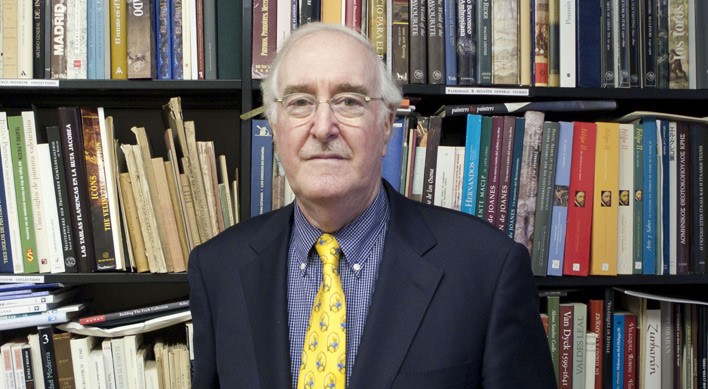
Image source: Institute of Fine Arts, New York University
CAA mourns the loss of Jonathan Brown, an art historian and curator who has had an immense impact on the study of art in the Hispanic world. With over fifty-one years of teaching, eight at Princeton and forty-three at the Institute of Fine Arts (IFA), Brown’s influence was far-reaching. As he put it, “Without modesty, I believe I have made a mark in my field—Hispanic art—and in the wider world of art history.”
As a student at the beginning of his career, Brown studied Spanish literature at Dartmouth College and studied abroad in Madrid, where he discovered and cultivated his lifelong interest in Velázquez and Spanish Baroque art. After finishing his doctorate at Princeton in 1964, he joined the Princeton Department of Art and Archeology from 1965–73 and then ultimately decided to pursue scholarship and teaching, publishing his first book in 1973 based on his dissertation, Images and Ideas in Seventeenth-Century Spanish Painting. He said that he was told “that it fell like a bombshell in the ranks of Spanish art historians. Implicitly, the book created a bridge between the iconographical approach of Panofsky and a contextual reading . . . ” This was just the start of a long career that included exhibitions at major museums, scholarly publications, awards, and other accomplishments. In his tenure, his work shaped the study of Spanish Baroque art and defined the practice of Velázquez, producing texts and surveys that have become standard references for the field. In the last decades of his life, as the Carroll and Milton Petrie Professor Emeritus of Fine Arts at the IFA, he expanded his practice to include Hispanic and colonial art in the Americas.
In 2011, Brown served as the Distinguished Scholar for CAA’s Annual Conference. This honor invites preeminent scholars in the field to participate in a session at the conference along colleagues and former students. The session can therefore be viewed as the equivalent of a living Festschrift: an occasion for applauding, examining, and extending a distinguished career in art history and an opportunity for encouraging dialogue between and among several generations of scholars. In recognizing the significance of this moment, he said that he had “received many awards for my contributions to the field, of which the most important is the Distinguished Scholar by the College Art Association . . .”
Read more about the remarkable career of Jonathan Brown here.
Announcement: CAA’s 110th Annual Conference Pivots to Virtual
posted by CAA — Jan 07, 2022
Meme Omogbai, CAA’s Executive Director and CEO, and Laura Anderson Barbata, Vice President for Annual Conference and Programs discuss the pivot to a virtual conference.
Dear CAA members,
First and foremost, we want to wish you a happy New Year and hope that you found a way to celebrate with loved ones during this challenging period of the pandemic. It’s essential that we continue to honor traditions, express gratitude, and maintain connections that are important to us.
As we continue to prepare for our Annual Conference beginning in February, the health and safety of our members is our primary concern. We prioritize member feedback and continue to be responsive to your needs and preferences in a way that is scalable. This past year, many of you expressed the desire for an in-person gathering in 2022, complemented by virtual components increasing accessibility. We have worked diligently to provide an experience that meets your expectations.
Focusing on meeting our commitment to members, based upon quantitative and qualitative analysis, surveys, and other feedback consistent with the fundamentals of our strategic repositioning, we have been closely monitoring the COVID pandemic and the rapidly developing Omicron strain as well as CDC guidelines. Given this information and the recent feedback we’ve received from you regarding concerns about convening in person, the travel advisory issued by the Chicago Department of Public Health (CDPH) this week, and the uncertainty of the weeks and months ahead, we have decided to make the CAA 2022 Annual Conference entirely virtual. All in-person sessions and activities scheduled for February 16–19 in Chicago will now become virtual on the same dates. Virtual sessions and activities scheduled for March 3–5 will remain the same. All recordings will also remain available through April 14 as previously planned and communicated.
Our history, as described in CAA’s centennial publication, The Eye, the Hand, the Mind, has shown that we can change and adapt. The pandemic has once again shown us how nimble we can be as we pivot for the future. CAA staff will work in the coming days to seamlessly shift programming to an all-virtual format.
If you have already registered for the conference at any paid level—all-access, presenter, or virtual-only—your registration will automatically be converted to all-access for all sessions at the current virtual rate. Current all-access registrants may also choose to be credited or refunded for the difference between the prior all-access and current virtual rates. Alternatively, we would greatly appreciate your considering donating this amount to CAA to help offset the costs related to this change. Those currently registered for all-access will receive an email in the coming days with a form to select their credit, donation, or refund preference.
We continue to be committed to fulfilling your expectations and to providing a conference that suits your means of engagement, provides a wealth of scholarly content, and allows multiple ways to connect with others. In contrast with last year’s conference, all presentations during the 2022 conference will be presented live via Zoom, rather than prerecorded. This will allow for more questions and spontaneous discussions.
During the all-virtual conference, we will have three opportunities to share with you our vision for CAA as we continue to reposition the organization for the twenty-first century. The Town Halls will give us an opportunity to hear from you so we can continue to meet your needs and accommodate your preferences.
- Convocation, on Wednesday, February 16, officially begins the 2022 conference. It will be a chance to hear from CAA leadership about where we are in the repositioning process and our vision for the future. We will also recognize the Distinguished Award recipients and hear from keynote speaker, Juan Salgado, Chancellor, City Colleges of Chicago, on improving education and economic opportunities for individuals in underserved communities.
- The Town Hall, on Friday, February 18, will provide an opportunity to hear the financial report of the association, the results of board elections, and other important business matters, including plans for the publications redesign and our restructured membership.
- The Town Hall on Saturday, March 5, will be another time to share information and address any outstanding items.
Please watch the short video discussion between Meme and Laura Anderson Barbata, Vice President for Annual Conference and Programs, which provides more information on the pivot to an all-virtual format.
Our website, registration portal, and FAQs will reflect the shift to an all-virtual format, and we will continue to update you through our newsletter and social media accounts. Thank you for your patience and flexibility during this time. You may contact us with any questions or concerns at info@collegeart.org.
We look forward to when we can once again meet safely face-to-face. Until then, we will continue to make positive use of virtual platforms and integrate them in ways that will benefit CAA members in the years to come, allowing us to broaden our reach across geographic and technological borders, and to emerge as a stronger organization.
Sincerely yours,
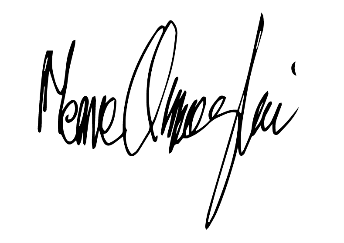
Meme Omogbai |
N. Elizabeth Schlatter |
CIHA World Congress in São Paulo, January 17-21, 2022
posted by CAA — Dec 22, 2021
The National Committee of the History of Art (NCHA) is pleased to announce that the 35th World Congress of the International Committee of the History of Art (CIHA) will take place January 17-21, 2022. Originally planned as an in-person gathering in São Paulo, Brazil, the format has shifted to a hybrid model due to the pandemic and most of the speakers will participate virtually. Registration for virtual attendance will be free of charge.
Organized around the theme of “Motion: Migrations,” the conference will virtually bring together an international roster of art historians for five days of scholarly exchange. Presentations will reflect on the different forms, theories and historiographies of migration in the history of art and in its contemporary conditions (see the conference page URL). The conference theme is especially relevant to our current period of lockdowns, restricted borders, and global supply chain disruptions.
The São Paulo conference is the second of two paired congresses on the question of “Motion” (the first half took place in Florence, Italy, in 2019). The session themes and the full program are available on the program tab of the CIHA conference website. 39 US-based art historians are scheduled to speak on the program, including 12 graduate students.
The NCHA supports the participation of US art historians at all stages of their career in this important global conversation and is committed to the success of the São Paulo CIHA. To this end, the NCHA has awarded travel fellowships to students in US doctoral programs so that they can participate in the conference in person. The Committee encourages US art historians to virtually attend the conference and to share information about it with any interested groups. Finally, please consider organizing events that enable graduate students or other members of your academic community to watch CIHA sessions together. Should you have questions, don’t hesitate to reach out to any of the NCHA members.
CIHA is the oldest continuously held art history conference in the world. Quadrennial CIHA Congresses promote innovative art historical research and foster dialogue among scholars from around the globe. NCHA is the US affiliate of CIHA and works to connect scholars in the United States with their counterparts in other countries, in part by encouraging participation in and attendance at CIHA congresses and colloquia. We hope to “see” many art historians at the upcoming conference.
Millard Meiss Publication Fund Grantees Fall 2021
posted by CAA — Dec 17, 2021
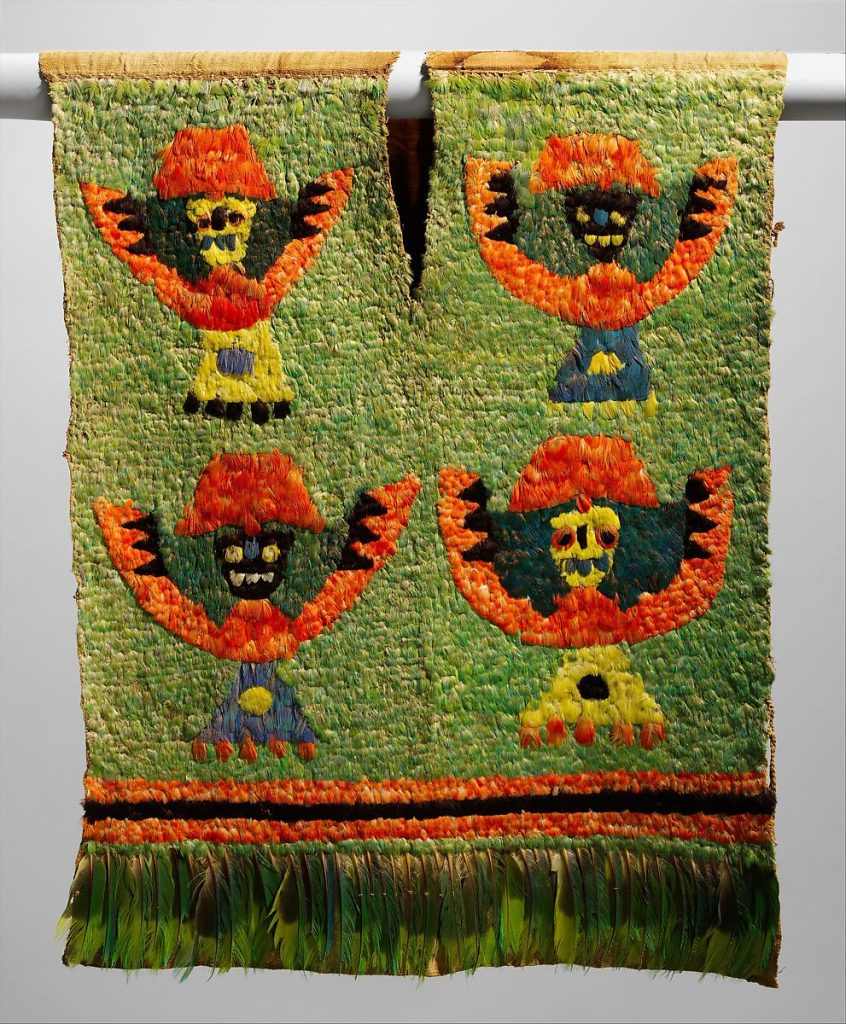
Feathered Tabard, 15th–16th century Peru, Chimú, cotton and feathers, Dimensions: H. 30 × W. 25 in. (76.2 × 63.5 cm), Fletcher Fund, 1959, The Metropolitan Museum of Art
MEET THE GRANTEES
Twice a year, CAA awards grants through the Millard Meiss Publication Fund to support book-length scholarly manuscripts in the history of art, visual studies, and related subjects that have been accepted by a publisher on their merits, but cannot be published in the most desirable form without a subsidy.
Thanks to the generous bequest of the late Prof. Millard Meiss, CAA began awarding these publishing grants in 1975.
The Millard Meiss Publication Fund grantees for Fall 2021 are:
Monica Amor, Gego: Weaving the Space In-Between. Art, Architecture, Design, and Craft at the Edge of Modernity, Yale University Press
Sampada Aranke, Death’s Futurity: The Visual Life of Black Power, Duke University Press
Shulamith Behr, Women Artists in Expressionism: From Empire to Emancipation, Princeton University Press
Suzaan Boettger, The Passions of Robert Smithson, University of Minnesota Press
Claudia Brittenham, Unseen Art: Memory, Vision, and Power in Ancient Mesoamerica, University of Texas Press
Kai jun Chen, China Made: Technocratic Culture in the Qing Imperial Porcelain Industry, 1680–1750, University of Washington Press
Stephanie Porras, The First Viral Images: Maerten de Vos, Antwerp Print, and the Early Modern Globe, Penn State University Press
Frederic Schwartz, The Culture of the Case: Madness, Crime, and Justice in Modern German Art, The MIT Press
Briana Smith, Free Berlin: Art, Urban Politics, and Everyday Life, The MIT Press
Karin Zitzewitz, Infrastructure and Form: The Global Networks of Indian Contemporary Art, 1991–2008, University of California Press
View a list of all recipients of the Millard Meiss Publication Fund from 1975 to the present. The list is alphabetized by author’s last name and includes book titles and publishers.
BACKGROUND
Books eligible for a Meiss grant must currently be under contract with a publisher and be on a subject in the arts or art history. The deadlines for the receipt of applications are March 15 and September 15 of each year. Please review the Application Guidelines and the Application Process, Schedule, and Checklist for complete instructions.
CONTACT
Questions? Please contact Cali Buckley, Content Manager for Education and Intellectual Property, at cbuckley@collegeart.org.
Affiliated Society News: December
posted by CAA — Dec 17, 2021
Many of CAA’s affiliated societies will be presenting sessions at our 110th Annual Conference from February 17-19 and from March 3-5. Check out a list of their sessions to preview!
To attend these sessions and more, make sure to register for the conference and learn more at its registration page.
BIBLIOGRAPHICAL SOCIETY OF AMERICA
Announcements
Bibliography Week 2022 Schedule & Registration
From January 25–28, 2022 the Bibliographical Society of America will celebrate Bibliography Week with a series of events designed to demonstrate bibliographical practice and its relevance to interdisciplinary scholarship in the humanities.
Tuesday, January 25, 4-5pm Eastern – Materialities of Tibetan Buddhist Texts
Within the diverse traditions of Tibetan Buddhism, the power of books—both printed and hand-written—lies not only in their contents, but also in their materiality as objects. The three scholars on this panel will share bibliographical studies of Tibetan texts that highlight how text production, circulation, and replication within architectural spaces has been utilized by Tibetan religious and political leaders to assert and solidify their power.
Wednesday, January 26, 4-5pm Eastern – Meet the Editors of Papers of the Bibliographical Society of America
Please join Papers of the Bibliographical Society of America (PBSA) co-editors Dr. Sarah Werner and Dr. Jesse Erickson for an online Q&A session on January 26. Drs. Werner and Erickson will discuss their vision for the journal and how it can be part of an expanded field of bibliographical scholarship. They will also answer questions that you might have about publishing in PBSA, such as the submission and review process, image permissions, special issues, and open access.
Thursday, January 27, 11-12pm Eastern – In-Person, Center for Book Arts Tour
Guests are invited to a tour of the Center for Books Arts in New York (28 W 27th St., 3rd Floor). For nearly 50 years, CBA has supported artists and uplifted the book arts by presenting exhibitions, lectures, readings, and performances; providing opportunities for artists, writers, curators and scholars through residencies, fellowships, publishing, and collecting; and empowering the creation of new book art by providing courses on book art related technique and history.
Thursday, January 27, 2-3pm Eastern – Bound Images: Maps and Books
This panel offers three case studies to explore what changes theoretically and in practice when we dethrone the ‘sovereign map’ and engage with the production, circulation and reading of maps as bound images, a hybrid graphic and textual part of the stories told by authors and publishers which is experienced by readers through materiality, context, and significance: Giuseppe Rosaccio’s Il mondo e sue parti (Florence, 1595), Johann Jakob Scheuchzer’s Physica Sacra (Augsburg and Ulm, 1731), and Jorge Juan and Antonio Ulloa’s Relación Histórica del viage a la América meridional (Madrid, 1748).
Friday, January 28, 12:00 pm Eastern – 2022 BSA Annual Meeting & New Scholars Program
- Christopher Adams, Malkin New Scholar – ‘Could you make it rather more of a He and She picture?’: The Queer Dust-Jacket and Postwar British Fiction
- Eve Houghton, Pantzer New Scholar – ‘I am always sorry to antagonize collectors’: Henrietta Bartlett and the 1916 Census of Shakespeare Quartos
- Liza Mardoyan, BSA New Scholar – Decorative Bird Initials in the Medieval Armenian Manuscript Culture
- Learn more about the 2022 New Scholars and read their talk abstracts here.
Friday, January 28, 1:30 pm Eastern – Keynote Lecture by Dr. Elizaveta Strakhov: What Makes Bibliography Critical? A Medievalist’s Response
What makes bibliography critical for a Western manuscripts scholar? Medievalists have, after all, enshrined bibliography to the point of developing the specialized subdisciplines of paleography and codicology. How does a Western medievalist breathe new life into bibliography, that bread-and-butter of their scholarly pursuits? This talk offers a case study of two manuscripts of bilingual Anglo-French poet Charles d’Orléans’s work: not the two collections notoriously supervised by him, but two later fifteenth-century, largely neglected manuscripts of his work, one made for European humanist circles and the other circulating with English Tudor royal audiences.
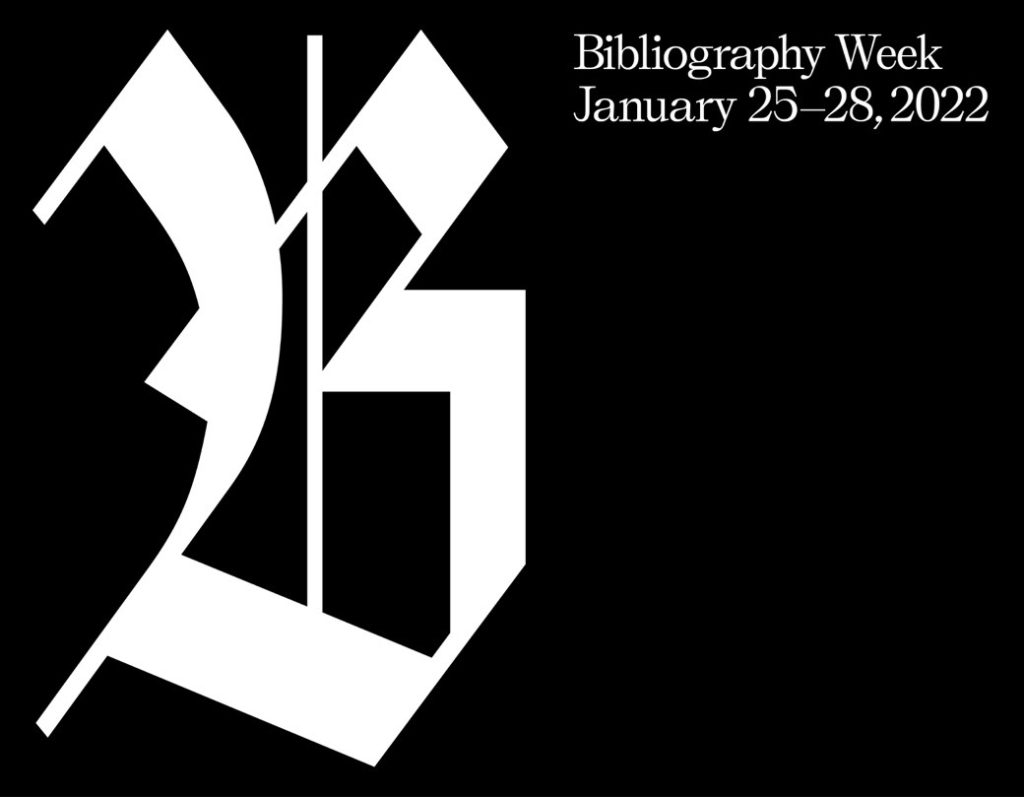
AHNCA (Association of Historians of Nineteenth-Century Art)
Events
Virtual Salon Series: Rethinking the Visual and Material Culture of Enslavement
January 19, 2022 at 7 pm EST
The Association of Historians of Nineteenth-Century Art and the Dahesh Museum of Art present a Virtual Salon, “Rethinking the Visual and Material Culture of Enslavement,” featuring Jennifer Van Horn (University of Delaware), Adrienne L. Childs (The Phillips Collection), and Phillip Troutman (George Washington University). Register at this link.
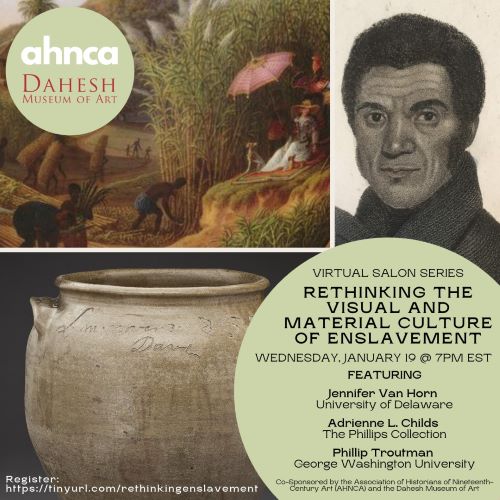
Virtual Salon: Decorative Arts and Materiality
February 9, 2022 at 7 pm EST
Please join us on Wednesday, February 9, at 7 pm EST for our Virtual Salon on the Decorative Arts and Materiality. This series of online events is co-sponsored by the Association of Historians of Nineteenth-Century Art (AHNCA) and the Dahesh Museum of Art. The panel will feature Amy F. Ogata (University of Southern California), Lee Talbot (The Textile Museum, George Washington University), and Christine Garnier (Center for Advanced Study in the Visual Arts/Harvard University). Registration information forthcoming!
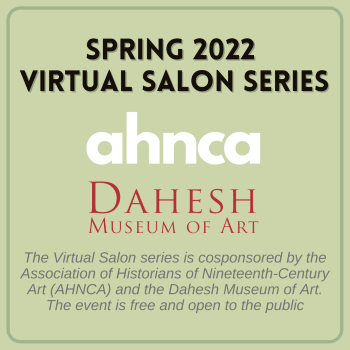
SOCIETY FOR THE HISTORY OF COLLECTING
Event
As part of its continuing series of Zoom lectures focusing on the collections of university museums, the next Society for the History of Collecting–West Coast chapter event will take place on January 28, 2022:
Collectors’ Clothing Caches: Selections from the Texas Fashion Collection
Annette Becker
28 January 2022, 10:00 AM, PST; 6 PM BST
This talk traces the history of the Texas Fashion Collection through three collections and collectors who have shaped its holdings. The Collection was originally conceived by Stanley and Edward Marcus, of the Neiman Marcus luxury department stores, who in 1938 created the Neiman Marcus award to recognize national and international talent in all areas of fashion and design. The talk then focuses on Claudia Heard de Osborne, whose passion for Balenciaga resulted in a gift of hundreds of garments by the designer. The final spotlight will be on brothers Scott and Stuart Gentling, visual artists who collected historic garments as part of their artistic practice.
Annette Becker is a material culture historian and arts educator committed to bridging popular and academic understandings of fashion history. She currently serves as the director and curator of the Texas Fashion Collection, an archive of nearly 20,000 garments and accessories housed at the University of North Texas.
To register for this event please email: events@societyhistorycollecting.org
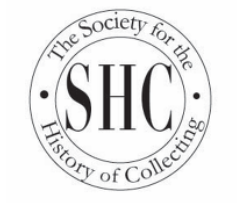
Meet the 2021 Wyeth Award Winners!
posted by CAA — Nov 18, 2021
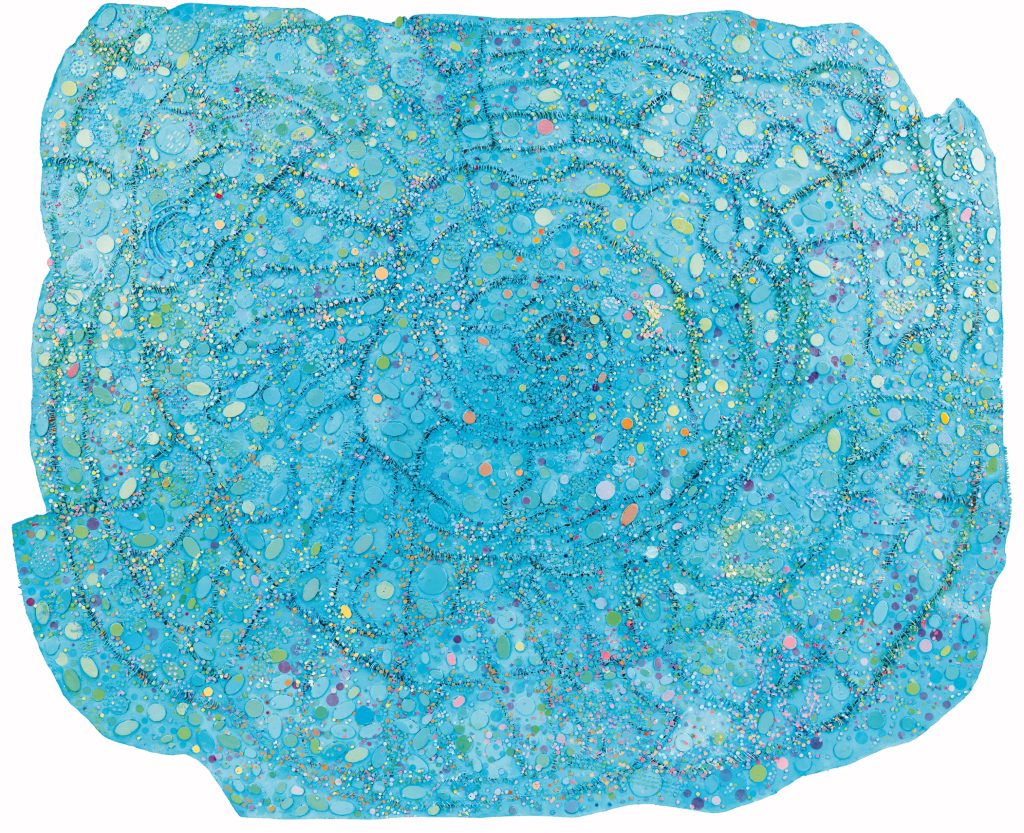
Howardena Pindell, Night Flight, 2015-16, mixed media on canvas, 75 X 63 in. (190.5 X 160 cm) (artwork © Howardena Pindell; photograph provided by Garth Freenan Gallery, New York)
MEET THE GRANTEES
Since 2005, the Wyeth Foundation for American Art has supported the publication of books on American art through the Wyeth Foundation for American Art Publication Grant, administered by CAA. The 2021 grantees are:
- Emilie Boone, A Nimble Arc: James Van Der Zee and Photography, Duke University Press
- Sarah Cowan, Howardena Pindell: Reclaiming Abstraction, Yale University Press
- Elizabeth Hamilton, Charting the Afrofuturist Imaginary in African American Art: The Black Female Fantastic, Taylor & Francis
- Jacqueline Taylor, Amaza Lee Meredith Imagines Herself Modern: Architecture and the Black American Middle Class, The MIT Press
Read a list of all recipients of the Wyeth Foundation for American Art Publication Grant from 2005 to the present.
BACKGROUND
For the Wyeth Foundation for American Art Publication Grant, “American art” is defined as art created in the United States, Canada, and Mexico. Eligible for the grant are book-length scholarly manuscripts in the history of American art, visual studies, and related subjects that have been accepted by a publisher on their merits but cannot be published in the most desirable form without a subsidy. The deadline for the receipt of applications is September 15 of each year.
Guidelines
Process, Materials, and Checklist
CONTACT
Questions? Please contact Cali Buckley, Content Manager, Education and Intellectual Property, at cbuckley@collegeart.org.
Meet the Spring 2021 Millard Meiss Publication Fund Grant Recipients
posted by CAA — Jun 24, 2021

Mbanza Kongo (São Salvador), capital of the Kingdom of Kongo, mid-18th century
MEET THE GRANTEES
Twice a year, CAA awards grants through the Millard Meiss Publication Fund to support book-length scholarly manuscripts in the history of art, visual studies, and related subjects that have been accepted by a publisher on their merits, but cannot be published in the most desirable form without a subsidy.
Thanks to the generous bequest of the late Prof. Millard Meiss, CAA began awarding these publishing grants in 1975.
Spring 2021 Grantees
Annette de Stecher, Wendat Women’s Art, McGill-Queen’s University Press
Sylvia Houghteling, The Art of Cloth in Mughal India, Princeton University Press
Pamela Karimi, Alternative Iran: Radical Spatial Strategies in Contemporary Art Practice, Stanford University Press
Meredith Martin and Gillian Weiss, The Sun King at Sea: Maritime Art and Galley Slavery in Louis XIV’s France, Getty Research Institute
Ying-Chen Peng, Artful Subversion: Empress Dowager Cixi’s Image Making in Art, Yale University Press
Yael Rice, Agents of Insight: Artists, Books, and Painting in Mughal South Asia, University of Washington Press
Sarah-Neel Smith, Metrics of Modernity: Art and Development in Postwar Turkey, University of California Press
Bert Winther-Tamaki, Tsuchi: An Environmental History of Contemporary Japanese Art, University of Minnesota Press
Announcing the 2021 Terra Publication Grant Winners
posted by Allison Walters — Apr 26, 2021
CAA is pleased to announce the 2021 recipients of the Terra Foundation for American Art International Publication Grant.

This program, which provides financial support for the publication of book-length scholarly manuscripts in the history of American art, is made possible by a generous grant from the Terra Foundation for American Art.
The nine Terra Foundation grantees for 2021 are:
Julie Ault, ed., Hidden in Plain Sight: Selected Writings on Asian American Art by Karen Higa, Dancing Foxes Press
Melissa Dabakis and Paul Kaplan, eds., Republics and Empires: Italian and American Art in Transnational Perspective, 1840-1970, Manchester University Press
Alice Dusapin, Wolfgang Stoerchle: Success in Failure, octopus/Christophe Daviet-Thery
Richard Hertz, Jack Goldstein and the CalArts Mafia, Les presses du réel, translation from English to French
Amy Von Lintel and Bonnie Roos, Expanding Abstract Expressionism: Women Artists and the Middle American West, Texas A&M University Press
Margaretta Markle Lovell, Painting the Inhabited Landscape: Fitz H. Lane and The Global Reach of Antebellum New England, The Pennsylvania State University Press
Friederike Schaefer, Claiming Space(s). Locating Suzanne Harris’ Dance Practice and Ephemeral Installations within New York City in the 1970s, De Gruyter
The International Author Conference Subventions confer two non-US authors of top-ranked books travel funds and complimentary registration to attend CAA’s 2022 Annual Conference in Chicago, February 16-19; they also received one-year CAA memberships.
The two author awardees for 2021 are:
- Alice Dusapin
- Friederike Schaefer



